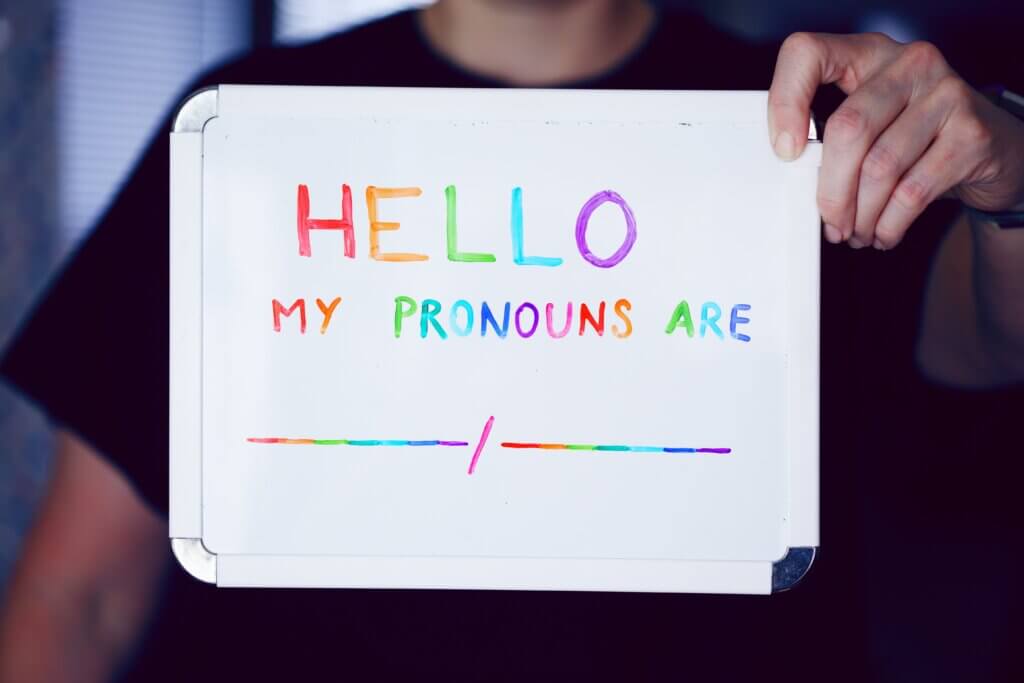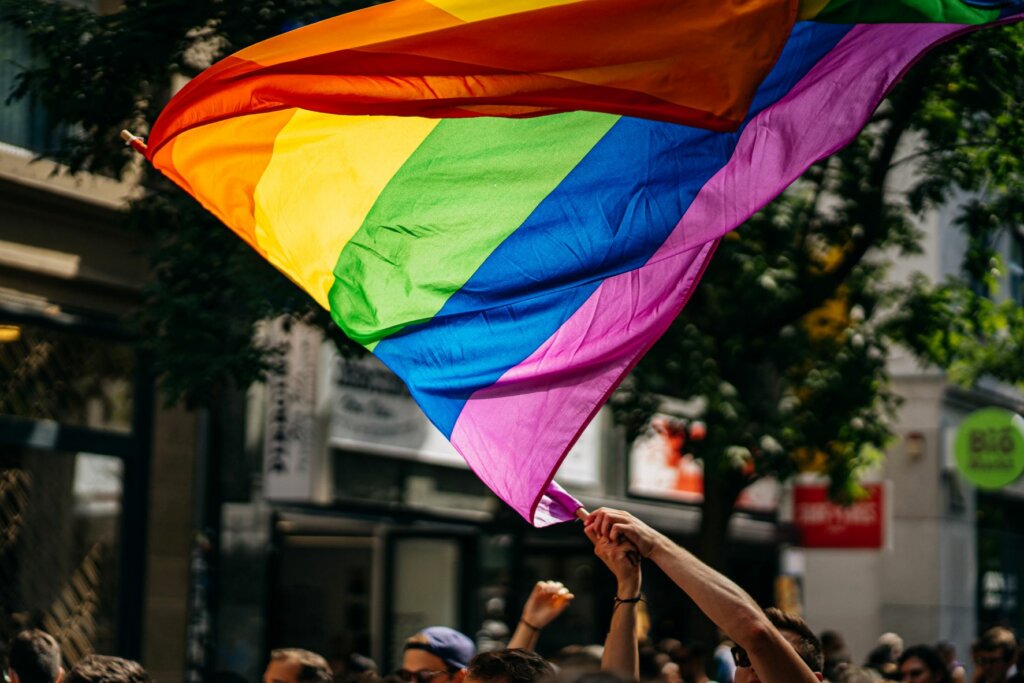
Pronouns are simply words that are used instead of a noun, e.g:
- He spoke to his parents before joining social media.
- They walked to school together.
- The teacher asked, “did you enjoy yourself at break time?”
Many organisations encourage employees to include their preferred pronouns in their email signatures if they would like to.
There are lots of pronouns available, with the most common being she/her/hers, they/them/theirs and he/him/his.
Pronouns in the online world
Most social media services allow users to choose/enter their pronouns
The more people include pronouns in their social media bios, email signatures and other areas online, the more normalised it becomes, and the more encouraged people are to express their online identity.
It is always your choice whether to disclose your pronouns or not, and you should only do so if you feel comfortable.
What is misgendering?
Misgendering occurs when an individual refers to another person using incorrect pronouns. This would be an example:
Taylor uses they/them pronouns but was referred to as “she” by a friend on a social media post.
Misgendering can be accidental – if you mistakenly misgender an individual, make sure they know it was unintentional and that it won’t happen again.
If you do not know somebody’s pronouns when interacting with them online and offline, you can instead use their name or gender-neutral pronouns like “they/them”.
What is deadnaming?
Deadnaming is when somebody refers to a transgender person using their birth name or a name they no longer use.
It can be accidental, but it is important to apologise and correct yourself as it can trigger unwanted feelings, including trauma, for that person.

Online hate towards the LGBTQ+ community
Research shows that minority groups including the LGBTQ+ community are twice as likely to experience online hate.
Misgendering and deadnaming is a form of online hate when the act is a deliberate attempt to invalidate another person’s gender identity.
Twitter and TikTok have introduced policies which specifically ban “deadnaming” and misgendering.
To report a Tweet:
- Click the three dots on the Tweet you would like to report
- Depending on who you are reporting for, select “someone else or a specific group of people”, or “myself”
- Select “Attacked because of their identity”
- Select “Misgendering or deadnaming them”
- Select “Gender/gender identity”
- Select “Submit the hateful conduct report”
To report on TikTok:
- Select the arrow on the bottom right of the video
- Select the “Report” flag at the bottom left
- Select “Hateful Behavior”
- Select “Submit”
Safeguarding young LGBTQ+ people online
Childnet’s mission is to make the internet a great and safe place for all young people.
We are looking forward to Safer Internet Day this year, where children and young people will have the opportunity to express what challenges they face online.
We hope to reach and hear from the LGBTQ+ community to identify problems they face online, encourage allies to support them, and work with organisations to put more measures in place to safeguard the community.
Further resources
“Online Identity” is a series of education packs to encourage young people aged 3-18 to explore how they manage their online identity.
“Own Your Online Identity” poster is for young people and adults to print for free. Whether you stick it in the classroom, bedroom, or kitchen – you will help young LGBTQ+ people feel empowered online.


